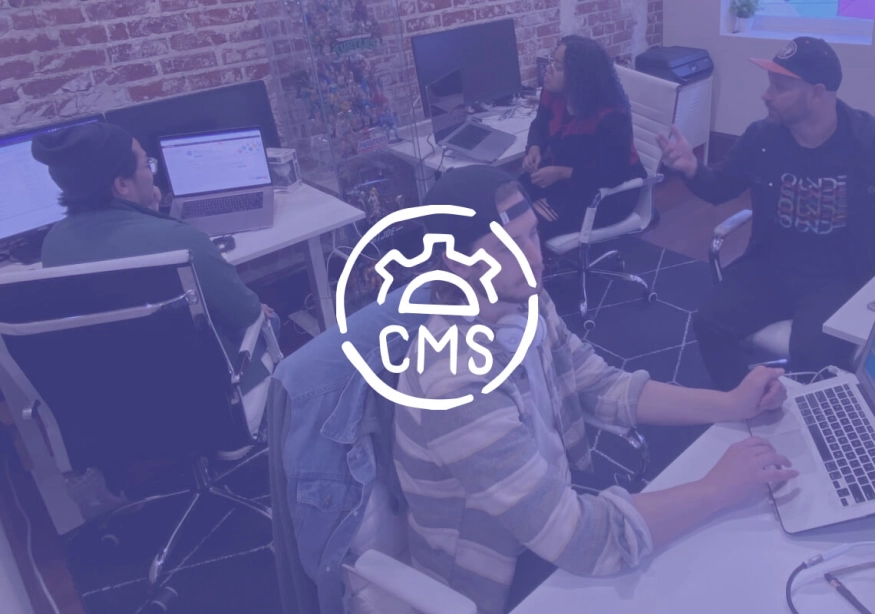New Year’s Resolution: No more scrounging for files and images on your WordPress site. Centralize your assets with one of these 7 digital asset management tools.
We all know the struggle of finding the right file or picture for a quick social media update, an email your company needs to send out, or something your colleague needs to hit a deadline. Scattered digital assets only make it harder on your team, and create a small yet grueling task every time you need a file. As WordPress experts, we have found 7 of the best DAM plugins you can add to your WordPress site today. Let’s make a New Year’s resolution for 2024 and find a DAM to centralize your storage.
Digital Asset Management (DAM): The practice and technology of managing, organizing, and distributing digital assets such as images, videos, audio files, documents, and other media content. It encompasses a broad range of activities and tools designed to efficiently handle digital media files.
Reasons you need a DAM
You can upload files and documents using the WordPress Media Library, which is where WordPress by default provides you with access to a minimal digital asset management system. However, it lacks the indexing, accessing, and sharing capabilities that you would anticipate from a conventional DAM system.
For example, you cannot name files or apply taxonomy to digital assets that you upload to the WordPress Media Library to facilitate future access. All of them are necessary components of DAM.
To securely organize your media files and share them with others, a top-notch WordPress digital asset management plugin is essential for business owners.
Cost-effective
Even while you have many options to save your most essential data elsewhere, such as cloud storage services like DropBox and Google Drive, the cost of their membership packages increases as the number of users increases. This isn't the case, though, with WordPress DAM plugins.
Time saved
Whether you are a feature writer for a well-known tabloid, a professional digital firm, or a freelance graphic designer, locating photographs, videos, or a PDF could take more time than you can afford with deadlines. Your valuable digital assets can be preserved with digital asset management, allowing you to access and recover them as needed as well as organized by category, file type, name, date, etc.
All in one place
A DAM is incredibly beneficial since it eliminates the power of a select few and enables everyone to access and save information for future use. Since many companies have an increased amount of remote employees centralized storage helps remote and onsite colleagues effortlessly access documents from any location.
Declutter quickly
If you are a writer or creative designer, you can imagine the digital clutter accumulated after finishing a project. You may even notice your computer working at a snail’s pace because of all the now useless files. With a DAM, you can keep all your files at arm’s length without cluttering your internal storage, clearing up your WordPress site in the process. (Pro tip: the faster your website loads, the better your SEO rank.)
WordPress DAM #1: Filr
This plugin is designed for ease of use and robust asset management. It offers features like filename encryption, file expiration based on specified dates or download numbers, and custom file directory configuration for enhanced security.
After uploading your files, you can use straightforward shortcodes to show them and provide global protection using the index.php or .htaccess file, or you can configure your custom file directory to prevent direct access to your files.
Best features
The ‘Document Library’ feature allows an unlimited amount of files straight to the front-end WordPress site
Employs a pagination and live search feature to show hundreds of files in a library
For optimal security, encrypt file names, password-protect ZIP files, and totally prevent external access to the files.
WordPress DAM #2: File Manager
Simple as its name, File Manager is a user-friendly DAM plugin ideal for organizing and protecting WordPress files. Its system offers an alternative to FTP and cPanel, facilitating quick and secure data asset transfers. It supports a variety of file types and integrates with applications like Google Drive, GitHub, and Dropbox, making it easy to declutter those existing files from all of your team’s digital avenues.
Best features
Its remote server allows for seamless uploads, copying, moving, renaming, creating, modifying, and removing files and folders.
File Manager lets you upload files of all sizes, as well as create, archive, and extract files in rar, zip, tar, and gzip formats, making it scalable as your business grows.
Drag and drop file upload from your desktop or browser.
WordPress DAM #3: Brandfolder
This cloud-based tool is a godsend for designers and creatives. Thanks to its user-friendly, cloud-based location, you can save and share all of your digital assets with clients and team members. Numerous applications are compatible with Brandfolder's integration, including WooCommerce, Shopify, Gmail, HubSpot, Salesforce, Marketo, Canva, and Slack. Brandfolder also offers strong search functions and robust privacy controls so all of your personal information and intellectual property is protected.
Best features
Edit your Brandfolders right on your WordPress dashboard
‘Media Library Integration’ lets you import files straight to WordPress site posts and pages
With ‘Popup Embed’ you can embed Brandfolder on widgets, pages, posts, and menu bars
WordPress DAM #4: Enhanced Media Library
This plugin simplifies searching and categorizing digital files within WordPress. It allows you to create your taxonomies for better organization and offers dynamic galleries and playlist features.
This DAM plugin is ideal if your company has been needing a deep decluttering of all file types.
Enhanced Media Library is extremely user-friendly; you can easily prohibit certain file types, automatically update galleries when new assets are added to the library, and rapidly manage your digital assets.
Best features
You have control over which files are allowed in the Media Library with this plugin. Using file type filters, media files can be filtered
Dynamically updates gallery when a file is added or removed
To update your Media Library with greater efficiency, you'll be able to rearrange media files, change their filenames, titles, and captions, and bulk-pick items
WordPress DAM #5: Canto
Known for its simplicity and power, Canto excels in centralizing, managing, sharing, and securing digital media assets. It is a straightforward yet effective media management system that enables you to set permission limits for albums and folders, add metadata to multiple uploaded pictures, and conduct fast searches through your image collection. To browse through your Media Library alphabetically, by date, or by file type, you can also build customizable sorting options. It provides connectivity with programs like Marketo, MailChimp, Slack, WordPress, and Google Drive.
Best features
Facial recognition tool instead of manual tagging
‘Smart Albums’ feature helps automatically sort files by tags, keywords, file types, & tags
‘Expiration date’ feature you can apply to protect sensitive files such as emails and shared links when collaborating with outside partners
Canto lets you define user roles by Administrators, Contributors, and Consumers with varying permissions as to who can upload, edit, and manage your WordPress site content.
Choosing your WordPress DAM
Before we let you go, let’s lay down some ground rules when it comes to enhancing your WordPress site with a DAM plugin.
You need a solid organizational scheme, like a well-organized closet, ensuring everything is tidy and easy to find. Think of the once-viral KonMari method, but instead of folding shirts, you’re managing your company’s digital files.
Make sure it's got a good search feature. You want to be able to find what you need right away. Preview options are great too; they let you take a glance at your files without opening them fully, saving you time when you’re on the go.
Uploading and downloading should be straightforward and quick. No one likes to wait, right? It's nice when these things just work smoothly and efficiently. Also, consider how it handles metadata – that's all the info about your files, like titles and descriptions. A good system here helps keep everything organized and easy to find.
Then, there’s where your files will live. Some plugins let you store files on your site or in the cloud. Having options is always good. Finally, the plugin should be easy to use. You don’t want to spend ages trying to figure it out. It should feel intuitive, almost like it’s doing half the work for you.



